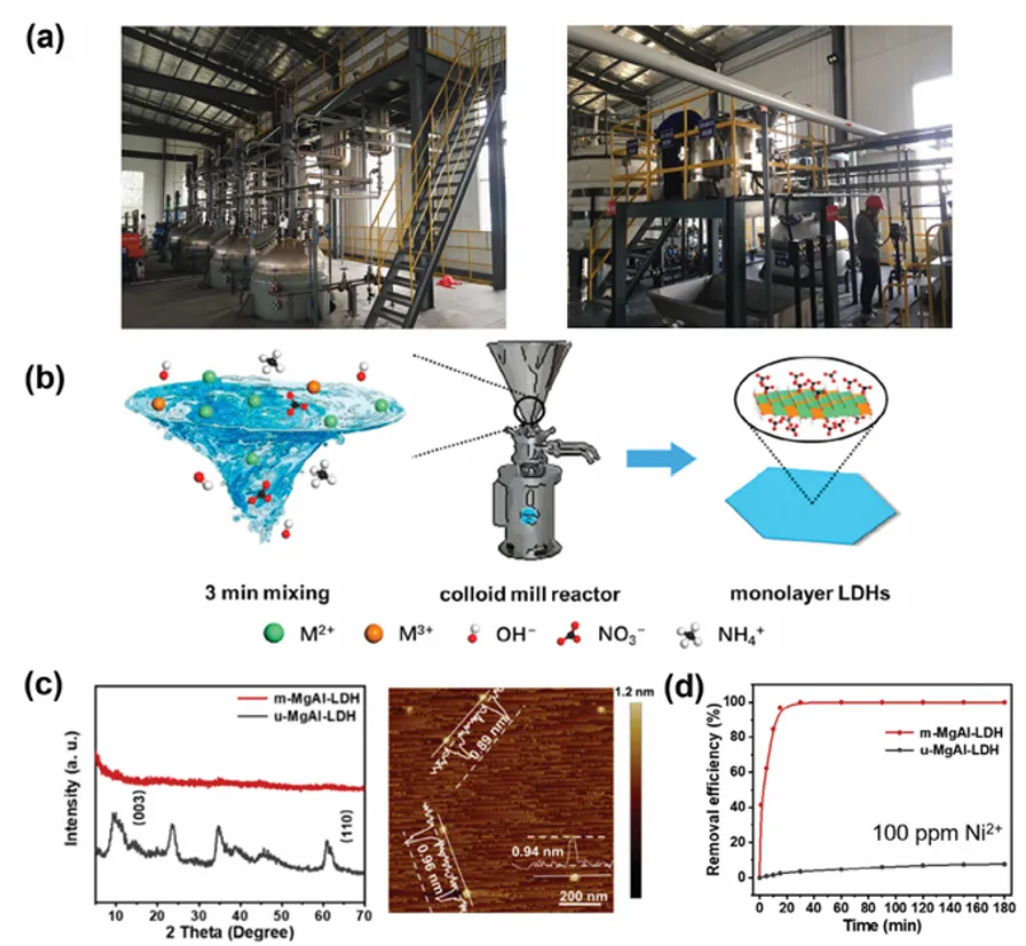Full Text Overview:
Photocatalysis and electrocatalysis have become effective technologies for addressing energy crises and environmental issues. However, the widespread application of these technologies is hindered by the large-scale production of photo/electrocatalysts. After the catalysts are scaled up for preparation, they must not only maintain high activity and stability but also be cost-effective and environmentally friendly. This article delves into the latest advancements in the large-scale synthesis of photo/electrocatalysts. It first discusses the factors to consider in the large-scale production of catalysts, then comprehensively introduces the synthesis methods for the bulk preparation of photo/electrocatalysts, and deeply discusses their respective advantages and limitations. In addition, it provides a detailed introduction to data analysis conducted through machine learning techniques, which not only accelerates the identification and improvement of potential new catalysts but also provides insights for improving the high-throughput synthesis of catalysts. Representative examples illustrate the application of large-scale catalysts in the field of industrial-scale photo/electrocatalytic applications. Finally, the challenges and prospects of large-scale production of photo/electrocatalysts are discussed. By bridging the gap between laboratory research and industrial applications, this article provides a reference for the future of large-scale preparation of photo/electrocatalysts for sustainable energy conversion and other fields.
Background Introduction:
With the increasing severity of the global energy crisis, the development and utilization of solar energy and green energy have attracted widespread attention due to their environmental friendliness and sustainable development. Photocatalysis and electrocatalysis technologies are considered promising methods for converting solar or green energy into chemical energy for storage. Photo/electrocatalysts are at the core of various catalytic reactions, such as photo/electrocatalytic water splitting, CO2 conversion, pollutant removal, and synthetic ammonia, and their use can accelerate chemical reactions, improve reaction selectivity, shorten the time for reactions to reach equilibrium, and ensure high yields. Currently, the design and development of catalysts face tremendous development opportunities, and researchers' expectations for the application of catalysts in actual industrial scenarios are increasing. In fact, in the traditional field of thermal catalysis, the ability to mass-produce catalysts is considered one of the important foundations for industrialization. In the subsequent production process, steps such as reactor design and factory testing will be carried out to achieve the entire process of small-scale, pilot-scale, and industrial-scale trials.Research
Starting Point:
For the rapidly developing field of photo/electrocatalysts in recent years, large-scale preparation technology is still relatively immature. The main reason is that most photo/electrocatalytic performances are related to the active sites exposed by the catalytic materials. This requires that when choosing the production technology route, the catalyst morphology, crystal structure, defect concentration, etc., must be considered, which sets high requirements for the catalyst synthesis process. Most popular technologies currently rely on expensive equipment and complex process technologies. At the same time, the yield of catalysts obtained through these methods is often significantly insufficient, often far below industrial requirements. Importantly, if conventional preparation processes are used, simply increasing the input of raw materials to achieve high yields of catalysts often leads to scaling effects, and there are environmental issues that further affect the quality of photo/electrocatalysts and their catalytic performance in industry. One of the most urgent tasks for the industrialization of photo/electrocatalytic technology is the preparation of catalysts.Summary and Outlook:
Overall, a variety of synthesis routes can achieve the large-scale preparation of photo/electrocatalysts, which are green and suitable for actual industrial applications. These synthesis methods, by adjusting reaction conditions, better control the structure and morphology of materials, ensuring the reproducibility of different production batches. It is worth mentioning that the industrial preparation of photo/electrocatalysts can also be achieved using advanced reactors. In addition, using machine learning to quickly select high-performance catalysts provides a low-cost path for the accuracy and enhancement of automated high-throughput experiments for large-scale catalyst preparation. We emphasize the key role of catalyst immobilization in some catalytic reactions and present noteworthy examples to highlight the application of large-scale materials in the field of industrial-scale photo/electrocatalytic applications. Despite significant progress in large-scale catalyst production, there are still challenges to be addressed:1) Develop innovative technologies for large-scale catalyst production to improve the atomic economy of chemical conversion and optimize the utilization of catalytic materials. Achieving efficient catalyst production in actual industrial environments may require the use of a combination of synthetic strategies and the series connection of various reactors to leverage their respective advantages.2) Some emerging synthetic technologies, such as rapid Joule heating and plasma, are expected to become viable strategies for the mass production of photo/electrocatalysts. Taking Joule heating as an example, the time scale for heating and cooling in the catalyst preparation process is greatly reduced, which can not only achieve rapid synthesis of photo/electrocatalysts but also effectively prevent the agglomeration of catalyst particles. Expanding the applicability of these methods can simultaneously develop a variety of materials, thereby broadening their range of industrial uses.3) Machine learning, through data mining, achieves rapid and reliable predictions and is currently at the initial stage of exploring effective catalysts. For industrial applications, it is necessary to explore more suitable machine learning methods and combine them with theoretical calculation data to predict the catalytic performance of photo/electrocatalysts. This integration could significantly reduce the time and cost of catalyst adjustment. Moreover, machine learning provides insights into photo/electrocatalytic reactions, helping to better understand the relationship between catalyst structure and performance.4) Further research should be conducted to utilize scaled-up synthetic catalytic materials for industrial-scale photo/electrocatalytic applications. In practical applications, in addition to the properties of the catalyst itself, operational conditions, reactors, and equipment issues also need to be considered. In summary, large-scale catalyst synthesis is one of the foundations for promoting the development of the photo/electrocatalytic industry. Only by comprehensively considering various factors and optimizing adjustments according to specific conditions can the most suitable catalysts be synthesized to achieve efficient and selective catalytic reactions.

